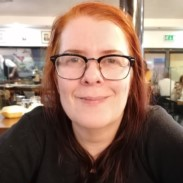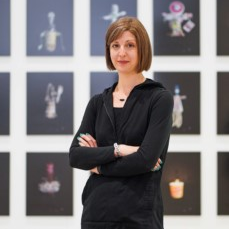Visual Arts and Design: Practice-Based Research
A special issue of Societies (ISSN 2075-4698).
Deadline for manuscript submissions: closed (30 April 2024) | Viewed by 17846
Special Issue Editors
Interests: art and design; arts-based methods; widening participation; access; higher education; democratic education; Basil Bernstein
Special Issues, Collections and Topics in MDPI journals
Interests: practice-based research; consumer culture; social media; selfies; psychoanalysis; marxism; feminism; fine art; lens-based media
Special Issues, Collections and Topics in MDPI journals
Special Issue Information
Dear Colleagues,
The present Special Issue aims to present the diversity of ontological approaches within the field of practice-based research. It also intends to discuss the usefulness—or otherwise—of notions such as validity, reliability and generalisability in relation to these research methods. Contributors may also explore different modes of understanding research rigor within a creative context.
Practice-based research is a broad term that encompasses many forms. Possible approaches include arts-based research, arts-informed research, practice-based research, participatory research, action research, artful research, Arts-Based Action Research (ABAR) and a/r/tography. It is hoped that contributions will come from a variety of discipline areas, including—but not limited to—contemporary art, design, fashion, textiles, graphics, lens-based media, creative education and animation. Examples from interdisciplinary or multidisciplinary research areas are encouraged. We value accounts that demonstrate a clear research narrative, addressing issues concerning the way the insights resulting from an inquiry can be meaningfully related to different contexts.
Articles from researchers, practitioners and research students are welcomed, they should be between 5000 and 7000 words, with images. It is the responsibility of the contributor to gain the right permissions for third-party material. Participants should be treated ethically.
You may choose our Joint Special Issue in Arts.
Prof. Dr. Samantha Broadhead
Dr. Dawn Woolley
Guest Editors
Manuscript Submission Information
Manuscripts should be submitted online at www.mdpi.com by registering and logging in to this website. Once you are registered, click here to go to the submission form. Manuscripts can be submitted until the deadline. All submissions that pass pre-check are peer-reviewed. Accepted papers will be published continuously in the journal (as soon as accepted) and will be listed together on the special issue website. Research articles, review articles as well as conceptual papers are invited. For planned papers, a title and short abstract (about 100 words) can be sent to the Editorial Office for announcement on this website.
Submitted manuscripts should not have been published previously, nor be under consideration for publication elsewhere (except conference proceedings papers). All manuscripts are thoroughly refereed through a double-blind peer-review process. A guide for authors and other relevant information for submission of manuscripts is available on the Instructions for Authors page. Societies is an international peer-reviewed open access monthly journal published by MDPI.
Please visit the Instructions for Authors page before submitting a manuscript. The Article Processing Charge (APC) for publication in this open access journal is 1400 CHF (Swiss Francs). Submitted papers should be well formatted and use good English. Authors may use MDPI's English editing service prior to publication or during author revisions.
Keywords
- art and design
- practice-based research
- arts-based research
- participatory research
- arts-based
- action research
Benefits of Publishing in a Special Issue
- Ease of navigation: Grouping papers by topic helps scholars navigate broad scope journals more efficiently.
- Greater discoverability: Special Issues support the reach and impact of scientific research. Articles in Special Issues are more discoverable and cited more frequently.
- Expansion of research network: Special Issues facilitate connections among authors, fostering scientific collaborations.
- External promotion: Articles in Special Issues are often promoted through the journal's social media, increasing their visibility.
- Reprint: MDPI Books provides the opportunity to republish successful Special Issues in book format, both online and in print.
Further information on MDPI's Special Issue policies can be found here.






